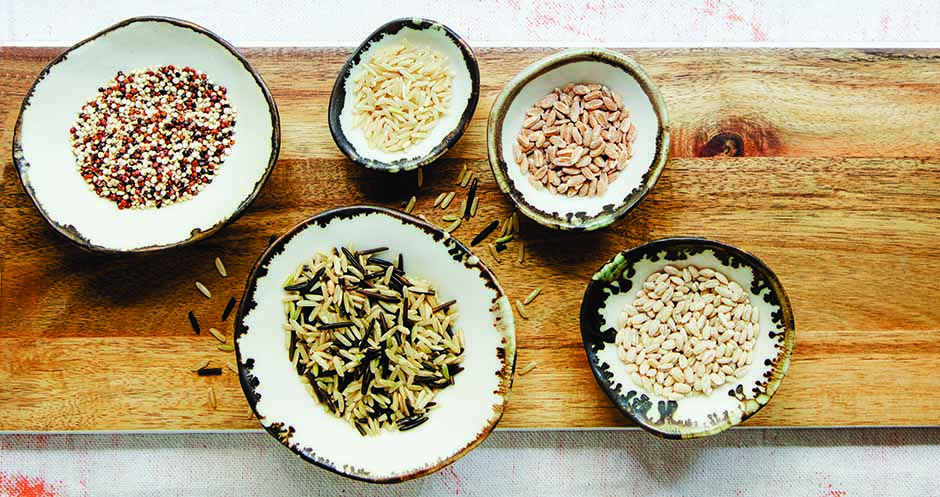What Is a Whole Grain?
All grains start as whole grains. In their natural state growing in the fields, whole grains are the entire seed of a plant. This seed (or “kernel”) is made up of three edible parts—the bran, germ and endosperm—surrounded by an inedible husk that protects the kernel from insects, water and disease.
Whole vs. Refined
Grains are divided into two subgroups, whole and refined. Whole grains contain the entire grain kernel—the bran, germ and endosperm. Examples include quinoa, barley, bulgur, oatmeal, brown rice and whole-wheat flour. Refined grains have been milled, a process that removes the bran and germ to give a finer texture and improve shelf life. But milling also removes nutrients such as dietary fiber, iron and many B vitamins. White rice and white flour are examples of refined grain products.
Whole Health
Full of healthy antioxidants, vitamins and minerals—including fiber, manganese, selenium, phosphorus, iron and B vitamins—whole grains have numerous health benefits, such as reducing risk of heart disease, stroke, cancer, diabetes and obesity, and maintaining healthy cholesterol levels. Studies have also linked whole grains to slower cognitive decline in aging and a lower risk of early death.
Source: Oldways/Whole Grains Council
Try some delicious recipes with whole grains, developed by the stellar students and Johnson & Wales University in Denver, Colorado.
Quinoa Chili
Caribbean Farro Risotto
Triple Rice Salad with Dried Fruits and Nuts
Banana Barley Pancakes
Bulgur Almond Cookies

